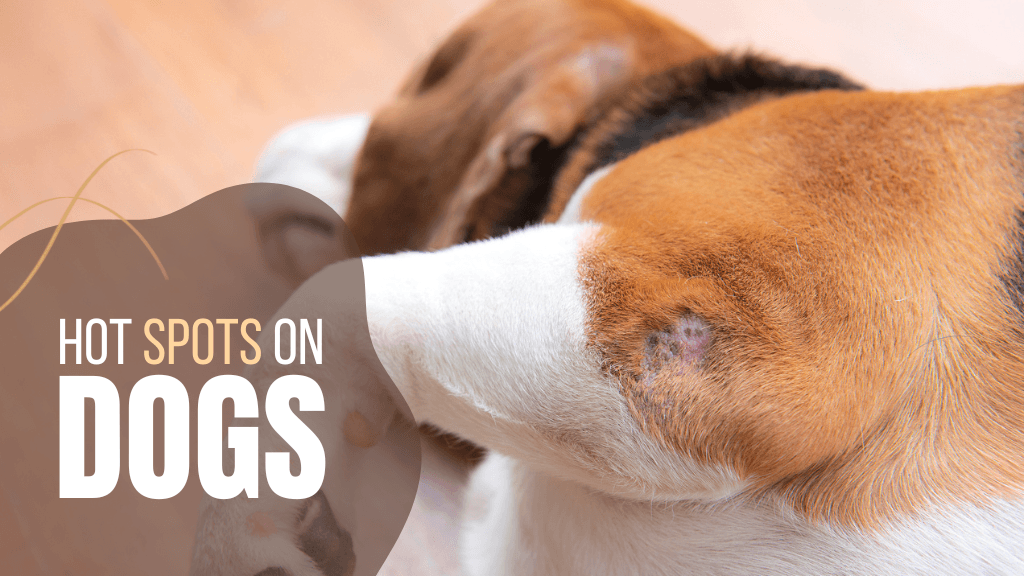Understanding and Treating Hot Spots on Dogs
)
Hot spots are a frequent skin condition found in dogs, especially during the warmer months. The combination of Australia’s high temperatures and humidity creates the perfect environment for hot spots to develop, making them a common issue for many pets across the country.
What Exactly Are Hot Spots on Dogs?
Hot spots, or acute moist dermatitis, are inflamed patches of skin that become infected with bacteria. They often begin as small red spots, much like insect bites, but can rapidly escalate into painful, oozing lesions if left untreated. This can cause significant discomfort for your dog, so early detection is key.
What Triggers Hot Spots in Dogs?
Hot spots are often exacerbated by the dog's own behaviour. Scratching, licking, or biting at irritated areas causes further trauma to the skin, leading to bacterial infections. But what causes this initial irritation?
Some of the most common triggers include:
- Parasites, such as fleas, ticks, or lice
- Allergies, whether related to food or the environment
- Skin or ear infections
- Moisture trapped in the fur after swimming or bathing
- Dirt, sand, or other debris trapped in the coat
- Matted or dirty fur
- Boredom, stress, or anxiety, which can lead to excessive licking
Many of these underlying issues can be recurring if not properly treated, resulting in the repeated occurrence of hot spots. Additionally, some breeds, particularly those with thick or long coats like Labradors, Rottweilers, St Bernards, and German Shepherds, are more susceptible to hot spots.
How to Spot Hot Spots on Your Dog
Skin issues in dogs often present with similar symptoms, so it’s important to have an accurate diagnosis to ensure proper treatment. Hot spots typically show the following signs:
- Red, inflamed patches of skin
- Swelling
- Hair loss around the affected area
- Damp, matted, or crusty fur surrounding the lesion
If you notice any of these signs, it's crucial to consult your veterinarian as soon as possible to prevent the condition from worsening.
How to Treat and Prevent Hot Spots in Dogs
When it comes to treating hot spots, prompt veterinary care is essential. Your vet will first need to determine the underlying cause of your dog’s discomfort, which may involve a full health check, discussions about your pet's diet and habits, and a physical examination of the skin. Once the root cause is identified, appropriate treatments can be prescribed.
Treatment options may include:
- Using an Elizabethan collar (cone) to prevent your pet from further irritating the spot
- Cleaning the affected area with vet-approved antiseptics
- Administering prescribed medications to soothe inflammation and fight infection
- Providing distractions, such as puzzle toys or long-lasting treats, to keep your dog from licking or chewing the area
In most cases, with the right care, hot spots can heal within one to two weeks.
Preventing Hot Spots in the Future
Once your dog's hot spot is treated, preventing future outbreaks is the next step. Your vet will provide tailored advice, but some common preventative measures include:
- If licking is due to stress or boredom, increasing your pet's exercise or providing more mental stimulation can help.
- If allergies or irritants are the cause, your vet may recommend changes in diet or prescribe antihistamines or other medications.
- If the condition is related to grooming, your vet may suggest adjusting your pet’s bathing routine or switching to a different shampoo.
What to Do if You Think Your Dog Has Hot Spots
If your dog is showing signs of a hot spot or seems unusually agitated and uncomfortable, it’s important to seek veterinary advice as soon as possible. An accurate diagnosis and prompt treatment will leave your pet feeling more comfortable and happier in no time.
At AllPets, we’re here to help you keep your dog’s skin healthy and itch-free. If you have any concerns or questions, don’t hesitate to reach out to our team for advice.
| Tags:DogHealth Advice |



